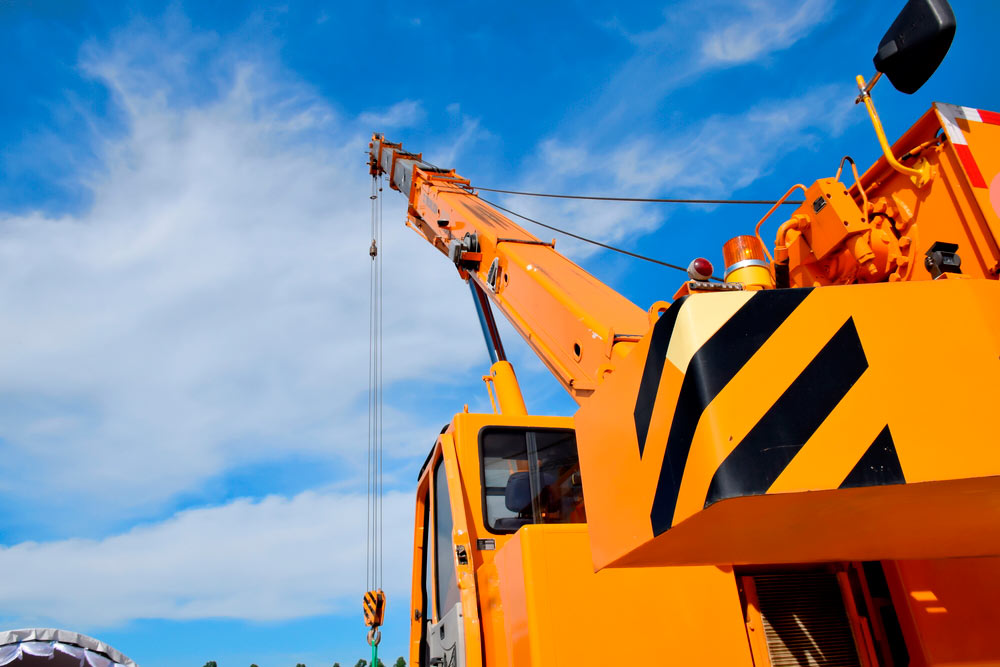Operating a Crane Truck
27 February, 2020
Operating a crane truck can be a dangerous job if it is not done with the necessary safety measures. For this reason we want to delve a bit into the safety measures that should be taken when working with a truck crane. Firstly, let’s start at the beginning. What is a crane truck?
What is a crane truck?
Crane trucks, or mobile cranes as they are often termed, are used in all areas of industry. The crane can be mounted on the front or rear of a flat-bed lorry and used to transfer loads onto and off the vehicle. Or they can be mounted on specialist trucks, and used to transfer a massive range of materials and equipment to all types of construction projects.
They can be used to crane transformers, generators and specialist equipment weighing hundreds of tonnes. Or they can be used to swing in place precast concrete or steel structures such as bridge spans, and hold them ready for fixing. In fact, if a project needs heavy lifting, it will most likely be lifted by a crane truck.
Tips for operating a crane truck
Operating a crane truck requires specialist training for what is a highly responsible job. With the weights involved, and the heights to which they are lifted, one mistake by the operator can result in serious injury or death to other members of the workforce or unwary passers-by. Before leaving the yard, and before any crane operation, certain procedures need to be followed.
- -As the driver/operator of the crane truck, you are the one who is ultimately responsible for whether the crane is safe to be operated. Check its manufacturer’s specifications for maximum weights and operating procedures for the job you’ve been tasked with.
- –Don’t just assume all servicing has been carried out. Unfold the crane and check all hydraulic pipes and hoses for leaks, chaffing or bulging.
- –Check all fluid levels, and electrical connections.
Onsite safety considerations

This activity also involves the safety aspects on site. Once you’re satisfied the vehicle meets all requirements for the job in hand, you are ready to drive to site. The job may be (relatively) straightforward, such as loading a heavy transformer onto the back of a low-loader at the manufacturers, before accompanying it on its journey, and craning it into position at its new home. Whether straightforward, or more complicated, before any lifting is undertaken, health and safety checks on site need to be carried out.
- –Check the ground will be able to support the vehicles weight plus the weight of the load when the crane’s hydraulic legs are extended.
- –Check your vehicle’s coms system with your banksman and other workers who may be involved in the lift. With so much digital equipment fitted in today’s modern crane trucks, smartphones and similar products should be switched off and stowed away during operations.
- –Check your operating arc. Ensure you are fully aware of any overhead hazards such as cables or walkways. Make a note of other buildings or structures within the operating area.
- –Ensure the ground within the operating area is coned or taped off to keep the area free of other workers or pedestrians.
- -At all times be aware of changing conditions such as increasing winds which may hazard the operation. If high winds begin to affect the lift, especially when close to other structures, the operation should be aborted until conditions improve.
Newsletter
Sign up for our newsletter and get the latest news from elebia
Automatic lifting hooks
Although general operating safety is down to the driver/operator, modern crane trucks are fitted with a wealth of safety features and cut-outs to minimise the risk of accidents. The elebia lifting hooks are a case in point. Designed to lift loads of up to 25 tons, they turn the humble crane hook into an automated lifting solution which can attract the lifting point, centre it, automatically lock it in place ready for lifting, and release it on completion of the move.
The elebia hook is an ideal hook for those single operator jobs, allowing the driver to remain at the crane controls at all times, while being able to automatically hook and unhook lifts. The elebia range is suitable for use with large rubble sacks, slings, cable and chain slings, textile slings and master links.





